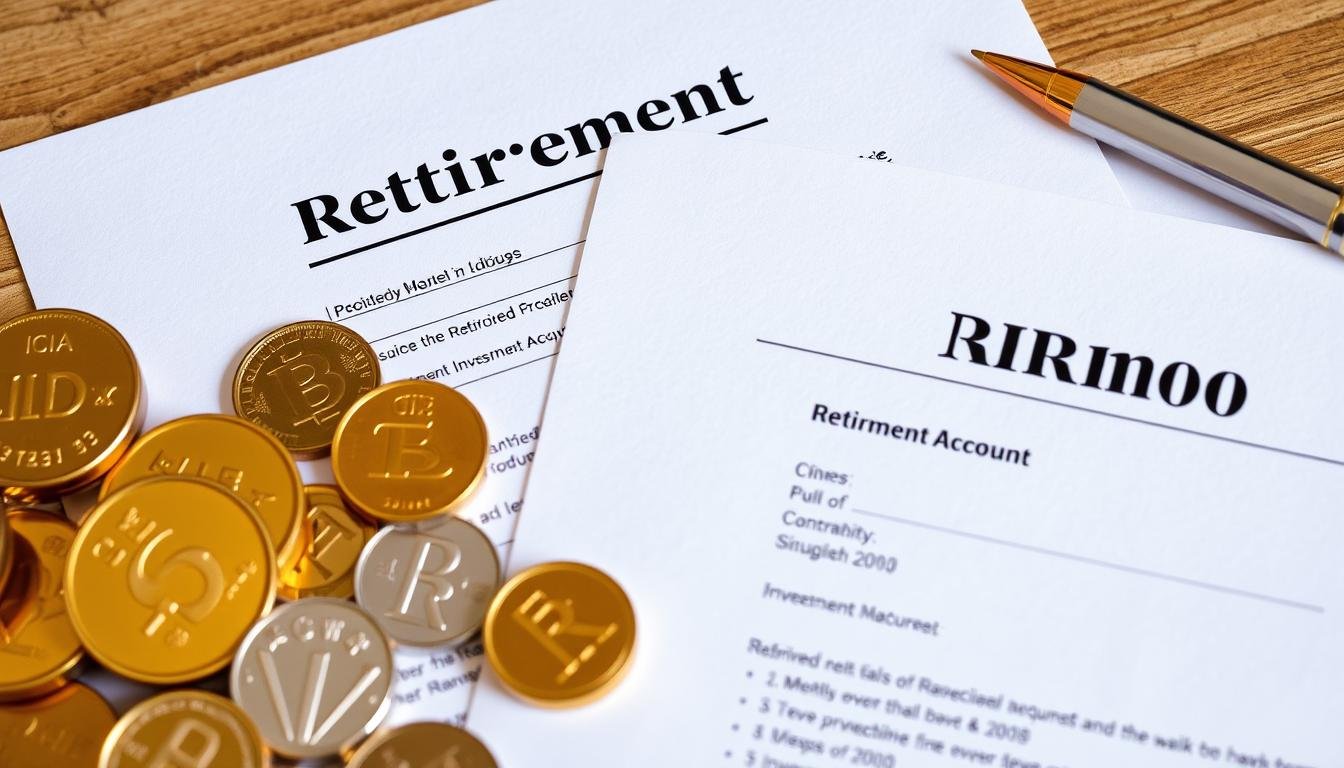As economic uncertainty continues to challenge traditional retirement plans, many retirees are turning to precious metals IRAs as a way to protect their hard-earned savings. Both gold and silver offer unique advantages as retirement investments, but choosing between a gold IRA vs silver IRA for retirees requires careful consideration of several factors. This comprehensive guide will help you understand the key differences, evaluate which option aligns with your retirement goals, and provide actionable criteria to make an informed decision.
Understanding Precious Metals IRAs
A precious metals IRA is a self-directed individual retirement account that allows you to hold physical gold, silver, platinum, or palladium instead of traditional paper assets like stocks and bonds. These specialized retirement accounts provide tax advantages similar to conventional IRAs while offering protection against inflation and economic volatility.
What Makes Precious Metals IRAs Different?
Unlike standard retirement accounts, precious metals IRAs hold physical assets stored in IRS-approved depositories. The metals must meet specific purity requirements: gold must be 99.5% pure, silver 99.9% pure, and platinum and palladium 99.95% pure. These accounts require a custodian to manage the administrative aspects and a depository for secure storage of your precious metals.
Free Gold & Silver IRA Comparison Guide
Discover how to protect your retirement with the right precious metals strategy. Our comprehensive guide breaks down everything you need to know about gold and silver IRAs.
Gold IRA: Benefits and Considerations
Gold has been valued for thousands of years as a store of wealth and continues to be sought after during times of economic uncertainty. A gold IRA allows retirees to hold physical gold in a tax-advantaged retirement account.

Gold IRA Advantages
- Strong historical performance as a store of value
- Lower volatility compared to silver
- Effective hedge against inflation and currency devaluation
- Global recognition and liquidity
- Limited supply with steady demand from central banks
- Better performance during economic crises
Gold IRA Limitations
- Higher entry cost than silver
- Potentially lower growth potential during economic expansion
- Higher storage fees due to greater value density
- Less industrial utility than silver
- May underperform during strong economic growth periods
- Limited quantity for the same investment amount
Who Should Consider a Gold IRA?
Gold IRAs are particularly well-suited for retirees who prioritize wealth preservation over growth potential. If you’re concerned about economic instability, currency devaluation, or stock market volatility, gold’s historical stability makes it an attractive option. Retirees with larger portfolios who can afford the higher minimum investment may find gold’s lower volatility preferable for retirement planning.
Silver IRA: Benefits and Considerations
Silver offers a more affordable entry point into precious metals IRAs while providing both investment and industrial value. A silver IRA allows retirees to hold physical silver that meets IRS purity standards in a tax-advantaged retirement account.

Silver IRA Advantages
- Lower entry cost than gold
- Higher growth potential during economic expansion
- Dual demand: investment and industrial applications
- Greater quantity of metal for the same investment
- Growing industrial demand in technology and green energy
- Historically outperforms gold during bull markets
Silver IRA Limitations
- Higher volatility than gold
- More susceptible to industrial demand fluctuations
- Requires more storage space
- Less historical precedent as a monetary metal
- May underperform during severe economic downturns
- More vulnerable to market manipulation
Who Should Consider a Silver IRA?
Silver IRAs are ideal for retirees with smaller investment budgets who still want exposure to precious metals. If you’re seeking higher growth potential and are comfortable with greater price volatility, silver offers an attractive option. Retirees who believe in the expanding industrial applications of silver, particularly in technology and renewable energy, may benefit from silver’s dual demand drivers.
Gold IRA vs Silver IRA: Side-by-Side Comparison
To help you make an informed decision between gold and silver IRAs, we’ve created this comprehensive comparison table highlighting the key differences in investment requirements, costs, and potential returns.
| Feature | Gold IRA | Silver IRA |
| Minimum Investment | $10,000-$25,000 typical | $5,000-$10,000 typical |
| Storage Fees (Annual) | $100-$300 | $100-$300 (may be higher due to volume) |
| Custodian Fees (Annual) | $75-$300 | $75-$300 |
| Historical Volatility | Lower | Higher |
| Growth Potential | Moderate | Higher |
| Performance During Economic Crisis | Strong | Moderate |
| Performance During Economic Growth | Moderate | Strong |
| Gold-to-Silver Ratio (Historical) | 1:60-1:80 | N/A |
| Industrial Demand | Limited | Significant |
| Storage Space Required | Less | More |
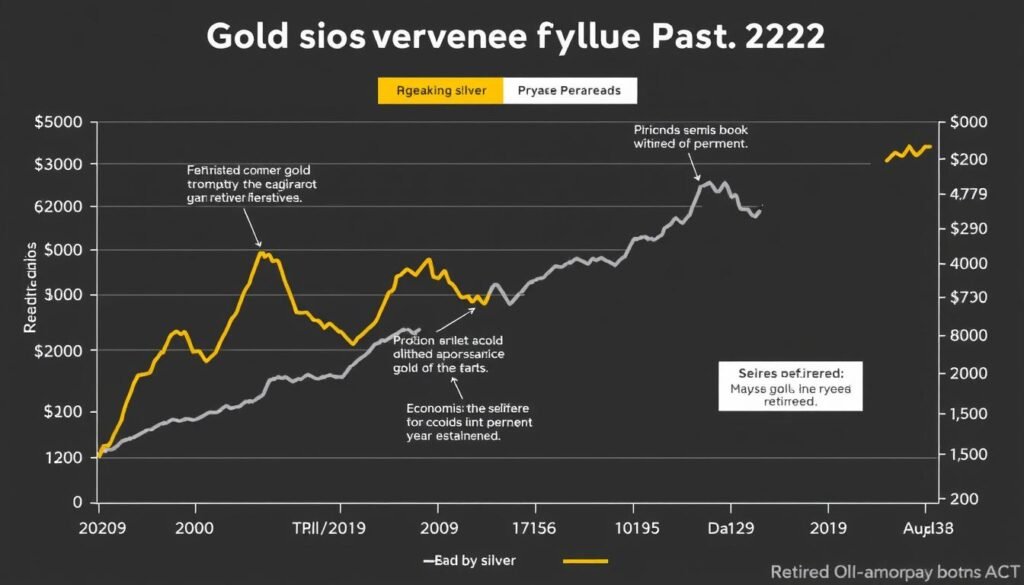
Real-World Scenarios: Which Metal Fits Your Retirement Strategy?
Understanding how different retirement situations might benefit from gold or silver IRAs can help you identify which option better aligns with your personal circumstances. Here are three common scenarios to consider:
Scenario 1: Conservative Retiree with Substantial Savings

Profile: John, 68, retired executive with $750,000 in retirement savings
Concerns: Preserving wealth, protecting against inflation, minimal volatility
Recommendation: Gold IRA (70-80% of precious metals allocation) with smaller silver position (20-30%). John’s substantial savings allow him to absorb the higher entry cost of gold, while his conservative approach benefits from gold’s lower volatility and stronger performance during economic uncertainty.
Scenario 2: Middle-Stage Retiree with Moderate Savings

Profile: Maria and Robert, early 60s, with $350,000 in retirement savings
Concerns: Balancing growth and security, moderate risk tolerance, 10+ year horizon
Recommendation: Balanced approach (50% gold, 50% silver). This couple benefits from silver’s growth potential while maintaining gold’s stability. Their moderate savings and longer time horizon allow them to weather silver’s volatility while capitalizing on potential higher returns.
Scenario 3: New Retiree with Limited Savings

Profile: David, 58, early retiree with $120,000 in retirement savings
Concerns: Growth potential, limited initial investment, longer retirement horizon
Recommendation: Silver IRA (70-80% of precious metals allocation) with smaller gold position (20-30%). David’s limited savings benefit from silver’s lower entry point, allowing him to acquire more metal. His longer retirement horizon can withstand silver’s volatility while potentially benefiting from its higher growth trajectory.
Personalized Retirement Strategy Session
Not sure which scenario fits your situation? Our precious metals specialists can help you develop a customized strategy based on your unique retirement goals.
5 Critical Questions Retirees Must Ask Before Choosing Between Gold and Silver IRAs
Before making your decision between a gold IRA vs silver IRA for retirees, ask yourself these five essential questions to determine which option better aligns with your retirement goals:

1. What is your primary investment goal: wealth preservation or growth potential?
If your primary concern is protecting your existing wealth against inflation and economic uncertainty, gold’s historical stability makes it the preferred choice. If you’re seeking higher growth potential and can tolerate more volatility, silver offers greater upside, particularly during periods of economic expansion and increasing industrial demand.
2. What is your investment budget for precious metals?
Your available investment capital significantly impacts your decision. Gold requires a higher minimum investment to acquire meaningful quantities. With a limited budget, silver allows you to purchase more ounces of metal, potentially benefiting from greater diversification and liquidity. Consider how much of your retirement portfolio you’re comfortable allocating to precious metals.
3. What is your risk tolerance and time horizon?
Silver experiences greater price volatility than gold, which can be advantageous during bull markets but may cause steeper declines during market corrections. If you have a longer time horizon and higher risk tolerance, silver’s volatility may be acceptable. For those nearer to or in retirement with lower risk tolerance, gold’s stability may be preferable.
4. What is your outlook on the economy and industrial demand?
Silver has significant industrial applications in electronics, solar panels, medical devices, and other growing sectors. If you believe these industries will expand, silver may offer additional growth drivers beyond its investment value. Gold, with limited industrial use, is less affected by economic cycles but more influenced by investment demand and central bank policies.
5. How important is liquidity and ease of transactions?
Both metals offer good liquidity, but gold’s higher value-to-volume ratio makes it easier to store and transport. Silver’s lower price point allows for more flexible partial liquidations when smaller amounts of cash are needed. Consider how and when you might need to access your investment during retirement.
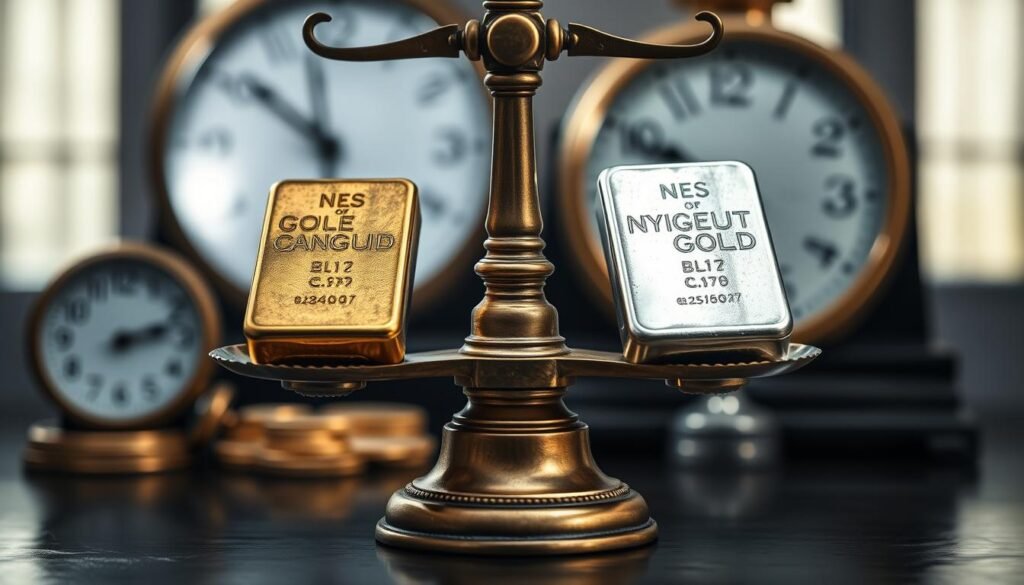
The Balanced Approach: Diversifying with Both Metals
While comparing gold IRA vs silver IRA for retirees is important, many financial advisors recommend a balanced approach that incorporates both metals. This strategy allows you to benefit from gold’s stability and silver’s growth potential while mitigating the risks associated with each.
Recommended Allocation Strategies Based on Retirement Stage
| Retirement Stage | Gold Allocation | Silver Allocation | Rationale |
| Early Retirement (50-60) | 40-50% | 50-60% | Longer horizon allows for higher silver allocation to capture growth potential |
| Mid Retirement (60-70) | 50-60% | 40-50% | Balanced approach with slight preference for stability |
| Late Retirement (70+) | 60-80% | 20-40% | Emphasis on wealth preservation with smaller allocation to silver for growth |
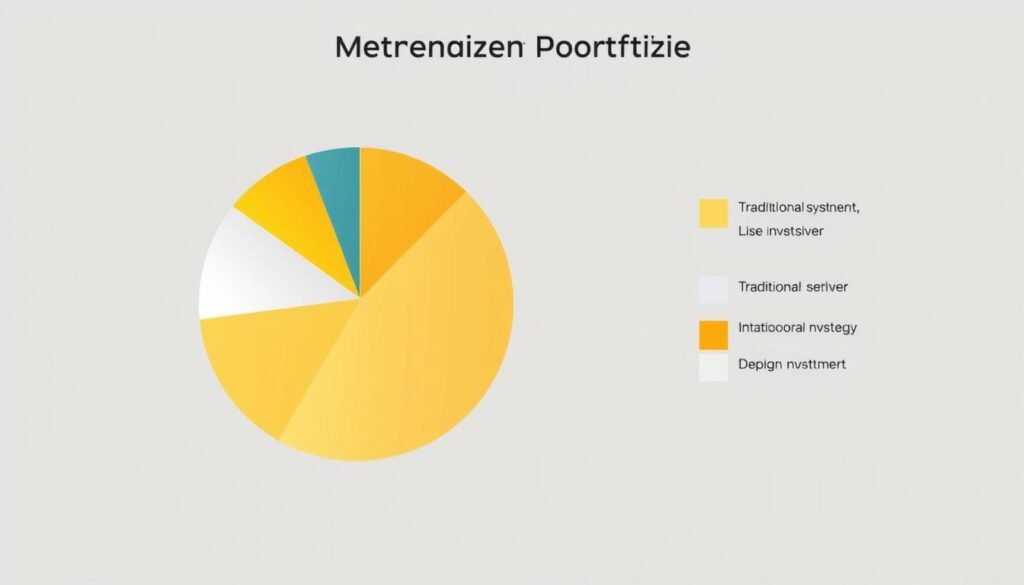
A diversified approach allows retirees to adjust their precious metals allocation based on changing economic conditions and personal circumstances. During periods of economic uncertainty, you might increase your gold allocation, while during economic expansion, you might favor silver for its growth potential.
Expert Tip: The Gold-to-Silver Ratio
Many precious metals investors monitor the gold-to-silver ratio (the number of ounces of silver it takes to purchase one ounce of gold) to optimize their allocation. When the ratio is historically high (above 80:1), silver may be undervalued relative to gold, suggesting a potential opportunity to increase silver holdings. When the ratio is low (below 50:1), gold may offer better value.
Getting Started with Precious Metals IRAs
Whether you choose a gold IRA, silver IRA, or a combination of both, the process for setting up your precious metals IRA follows these essential steps:
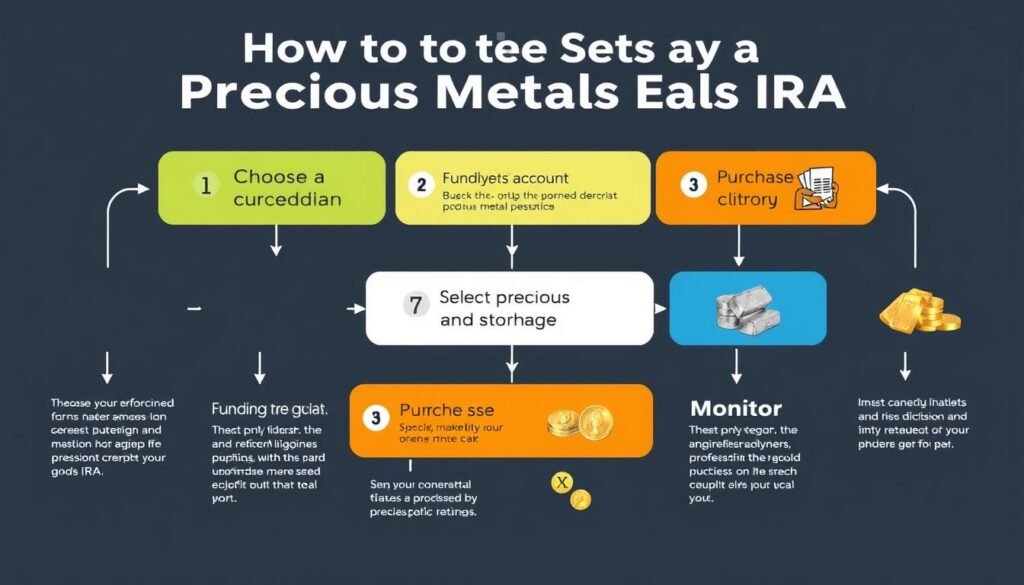
- Choose a reputable custodian that specializes in precious metals IRAs and offers competitive fees, secure storage options, and excellent customer service.
- Fund your account through a direct transfer from an existing IRA, a rollover from a 401(k) or other qualified retirement plan, or a new contribution (subject to annual limits).
- Select your precious metals based on your investment strategy, ensuring they meet IRS purity requirements (99.5% for gold, 99.9% for silver).
- Complete the purchase through your custodian, who will arrange for secure storage in an IRS-approved depository.
- Monitor your investment regularly and adjust your allocation as needed based on market conditions and your changing retirement needs.
Ready to Protect Your Retirement with Precious Metals?
Our team of retirement specialists can help you navigate the process of setting up a gold or silver IRA that aligns with your financial goals.
or
Conclusion: Making the Right Choice for Your Retirement
When evaluating gold IRA vs silver IRA for retirees, there’s no one-size-fits-all answer. The right choice depends on your specific retirement goals, financial situation, risk tolerance, and economic outlook.
The ideal precious metals strategy for most retirees is not choosing between gold and silver, but rather determining the optimal allocation of both metals to achieve a balance of stability and growth potential.
Gold offers superior stability, wealth preservation, and protection during economic crises, making it ideal for conservative retirees prioritizing capital preservation. Silver provides greater affordability, growth potential, and exposure to industrial demand, making it suitable for retirees with longer time horizons seeking higher returns.
By carefully considering the factors outlined in this guide and potentially consulting with a financial advisor specializing in precious metals, you can develop a retirement strategy that effectively incorporates these valuable assets to help secure your financial future.

Take the Next Step in Securing Your Retirement
Download our comprehensive guide to learn more about how precious metals can protect and enhance your retirement savings.

